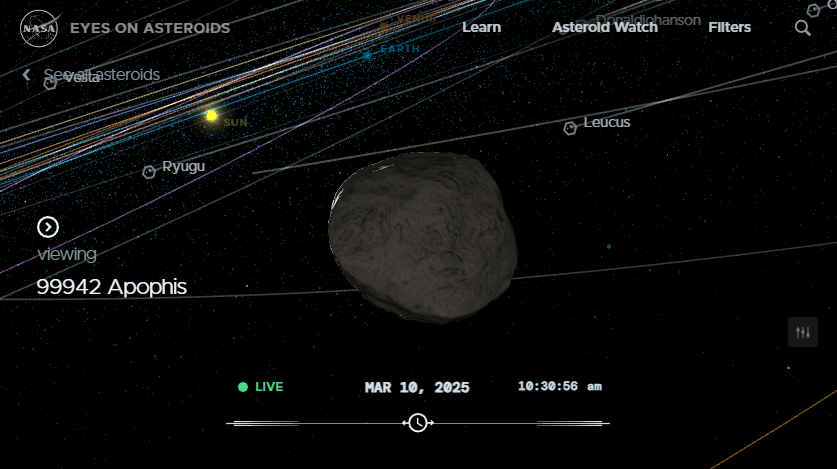In late December, a telescope in Chile discovered a small asteroid given the designation 2024 YR4. About a month later, initial observations of the asteroid, estimated to be 40 to 90 meters across, resulted in an orbit that had about a 1% chance of colliding with the Earth in December 2032. That was not that unusual, as there have been several near Earth objects (NEOs) that initially had small chances of collisions that then disappeared once more observations refined their orbits.This time, though, the additional observations caused the chances of that 2032 impact to gradually grow. By Feb. 18, the asteroid had a 3.1% chance of a collision — the highest ever recorded for an object the size of 2024 YR4. Had countless science fiction stories of asteroids discovered on a collision course with Earth become fact?No, as it turned out. More observations in the following days refined the orbit and dramatically lowered the chances of an impact. By Feb. 24, NASA’s Center for Near-Earth Object Studies estimated that 2024 YR4 had just a 0.004% chance of an impact. “That’s zero, folks!” quipped Richard Binzel, an MIT professor of planetary science who studies asteroids, in an email.The brief surge of interest in 2024 YR4, which made its way into mainstream media even amid all the activities of the new Trump administration, offers a challenge and an opportunity for the planetary defense community.The opportunity comes from the renewed interest in planetary defense. While NASA spends significantly more on the subject now than it did a decade ago, scientists are looking to do more. One example is ongoing efforts to win support for a mission to Apophis, an asteroid that will make a close flyby of the Earth in 2029. NASA has yet to greenlight a dedicated mission to Apophis despite proposals that include repurposing Janus, a pair of NASA smallsats built but then placed in storage when delays in its rideshare launch kept it from carrying out its original asteroid mission.The person likely to be NASA’s next administrator appears receptive to boosting planetary defense. “There is a lot of taxpayer-funded science that should be reviewed & potentially reduced, but planetary defense against NEO threats seems disproportionately underfunded relative to the likelihood and magnitude of the associated risks & consequences,” Jared Isaacman wrote on social media Feb. 14, near the peak of interest in 2024 YR4.This was one of the few policy statements he has made publicly since being nominated, suggesting he would be open to increasing spending on planetary defense. (He didn’t explain what other “taxpayer-funded science” should be cut, though, which has alarmed other scientists.)The challenge is corralling that interest into a coherent program, particularly in an era where norms are being challenged and lines of communication short-circuited. For example, at the height of the mania about 2024 YR4, some in the space industry went public with calls for NASA to start developing a mission to deflect the asteroid even though the impact risk remained small.“Time to get serious about building spaceships for Earth defense,” John Gedmark, chief executive of Astranis, posted on social media Feb. 18, at the peak of the impact risk. “PUT ME IN COACH.” He didn’t explain what Astranis, a company that builds small GEO communications satellites, could offer for planetary defense.Planetary defense professionals advised caution, though, and they were proven right when the impact risk fell to zero. But it’s easy to imagine a similar scenario in the future where that caution is circumvented by those seeking to take action, or at least be seen taking action.And there will likely be similar scenarios in the coming years. Later this year, the Rubin Observatory in Chile will begin observations with its large, wide-field telescope, discovering dozens of NEOs per night. In late 2027, NASA will launch NEO Surveyor, an infrared space telescope optimized for detecting near Earth asteroids.More discoveries mean more cases like 2024 YR4: asteroids that look potentially hazardous, at least initially. One day, those telescopes may find an asteroid whose chances of impact never drop to zero.This article first appeared in the March 2025 issue of SpaceNews Magazine with the title “Foust Forward: Improve planetary defense? This case has a non-zero chance.“
By Tyler Mitchell
Tyler is a renowned journalist with years of experience covering a wide range of topics including politics, entertainment, and technology. His insightful analysis and compelling storytelling have made him a trusted source for breaking news and expert commentary.
